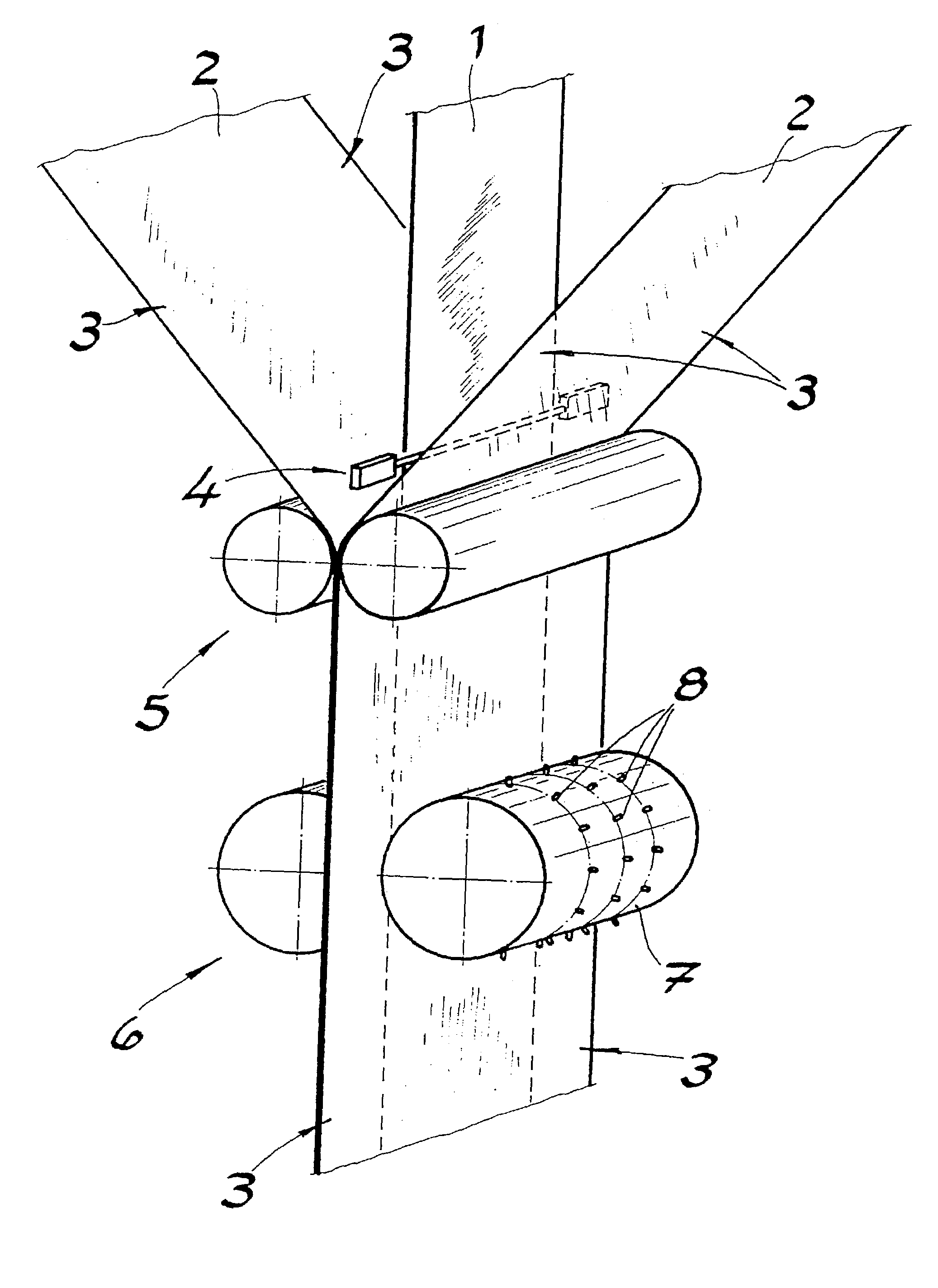Method for producing an air-permeable laminate film with a textile surface, which has elastic and non-elastic regions
a textile surface and air-permeable technology, applied in the field of air-permeable laminate films, can solve the problems of not concentrated stretching, improve the resistance of the laminate film to ambient influences and substances such as skin protection agents, and improve the stretching capacity of the laminate film
- Summary
- Abstract
- Description
- Claims
- Application Information
AI Technical Summary
Benefits of technology
Problems solved by technology
Method used
Image
Examples
example
[0018]A laminate made of elastic film strips and two material webs of polypropylene fiber non-woven fabric was produced on a laminating machine, according to the method described. The elastic film strips possessed a width of 50 mm and a thickness of 75 μm and consisted of a compound on the basis of styrene ethylene block copolymer (SEBS) with an addition of polyethylene copolymer. Several parallel elastic film strips, at a distance from one another, were passed to the laminating unit and introduced between the fiber non-woven fabric material webs. In the regions between the film strips, the fiber non-woven fabric webs were glued to one another, specifically using a polyurethane adhesive that was applied to the fiber non-woven fabric in a three-roller application unit. The laminate subsequently passed through an ultrasound bonding station, in which the regions in which the elastic film strips were present were bonded at certain points. The bonding points were arranged in a uniform di...
PUM
| Property | Measurement | Unit |
|---|---|---|
| thickness | aaaaa | aaaaa |
| width | aaaaa | aaaaa |
| width | aaaaa | aaaaa |
Abstract
Description
Claims
Application Information
 Login to View More
Login to View More - R&D
- Intellectual Property
- Life Sciences
- Materials
- Tech Scout
- Unparalleled Data Quality
- Higher Quality Content
- 60% Fewer Hallucinations
Browse by: Latest US Patents, China's latest patents, Technical Efficacy Thesaurus, Application Domain, Technology Topic, Popular Technical Reports.
© 2025 PatSnap. All rights reserved.Legal|Privacy policy|Modern Slavery Act Transparency Statement|Sitemap|About US| Contact US: help@patsnap.com


